Like BMW iX3 , the German brand offers, for the first time in its history, a model with three different propulsion systems: exclusively with a combustion engine (whether gasoline or diesel), plug-in hybrid and, of course, 100% electric.
After the other electrified version, the X3 plug-in hybrid, has already deserved praise, we went to find out if the successful SUV variant powered by electrons is deserving of the same “honours”.
In the aesthetic field I must admit that I like the final result. Yes, the lines and, above all, the proportions are those we already know from the X3, but the iX3 has a series of details (such as the reduced grille or the rear diffuser) that allow it to stand out from its combustion brothers .
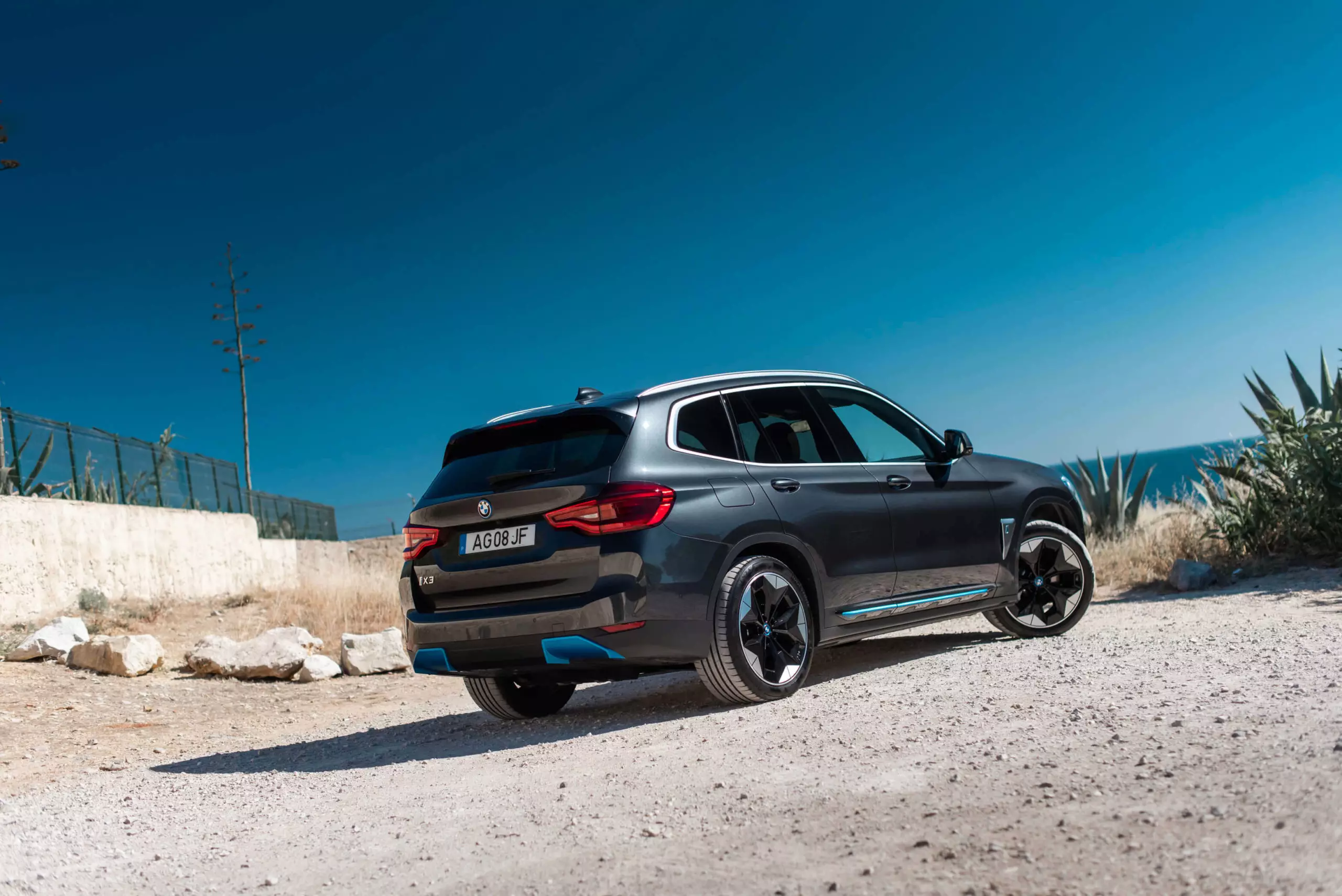
"Futurisms" only in mechanics
In the technical chapter the iX3 can even adopt the “mechanics of the future”, however, inside we find a typically BMW environment. The physical controls mix very well with the tactile ones, the extremely complete infotainment system “gives us” with countless menus and submenus, and the pleasantness of the materials and robustness of the assembly are at the level that the Munich brand has accustomed us to.
In the field of habitability, the quotas remained practically unchanged compared to X3. In this way, there is still room for four adults to travel in great comfort (the seats help in this aspect) and the 510 liter trunk only lost 40 liters compared to the combustion version (but it is 60 liters larger than the X3 plug hybrid -in).
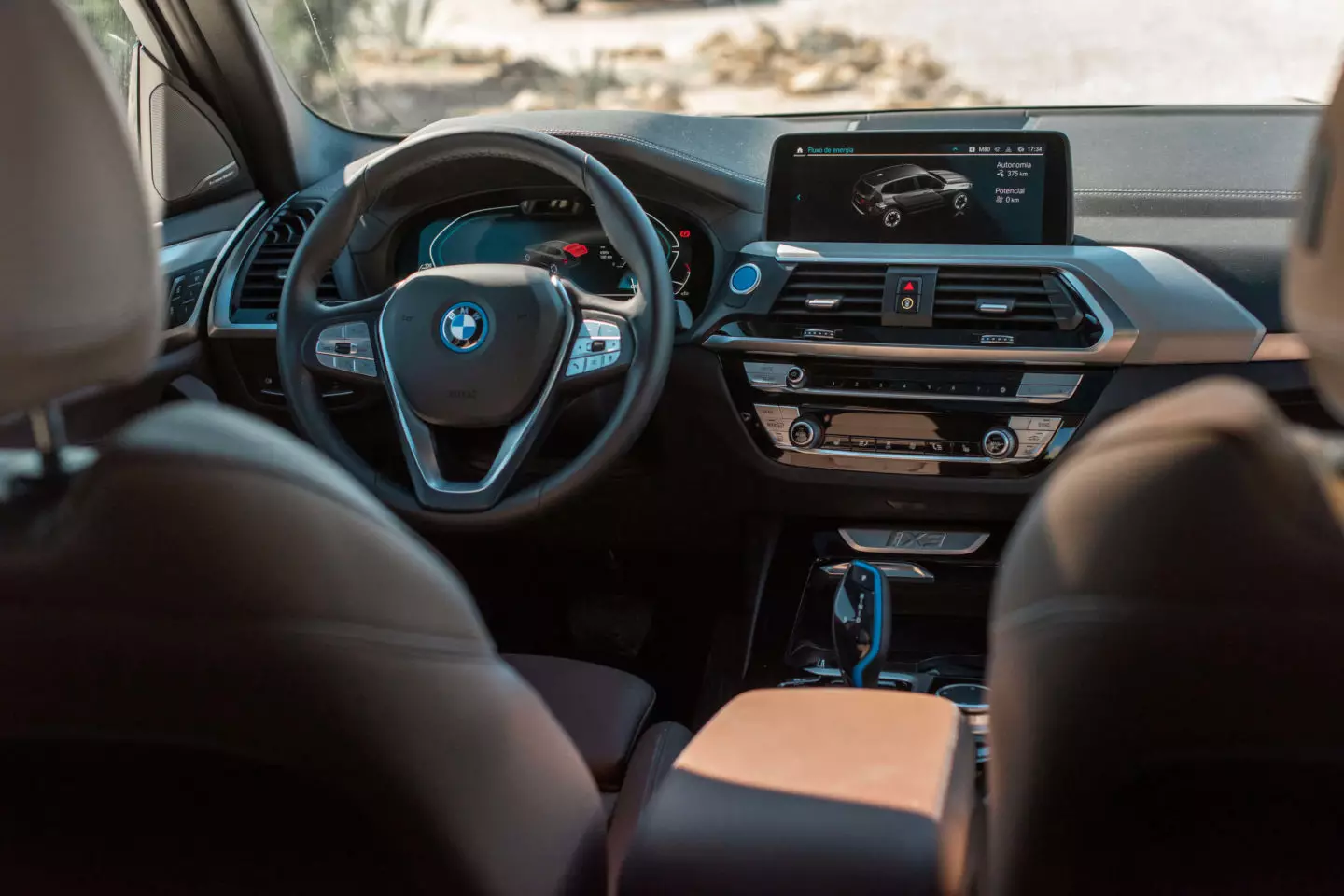
The interior is practically identical to the X3 with a combustion engine.
Interestingly, since the iX3 does not use a dedicated platform, the transmission tunnel is still present, despite not having a specific function. In this way it only “impairs” the legroom of the third passenger, in the middle, in the back seat.
SUV, electric, but above all a BMW
As well as being BMW's first electric SUV, the iX3 is also the Munich brand's first SUV only available with rear-wheel drive. This is something that its main rivals, the Mercedes-Benz EQC and Audi e-tron, don't “imitate”, counting both with all-wheel drive which in countries with harsh winters is essential.However, in this “seaside corner planted”, weather conditions rarely make all-wheel drive a “first necessity” and I must admit that it's funny to have an SUV with 286 hp (210 kW) and a maximum torque of 400 Nm delivered. exclusively to the rear axle.
With 2.26 tonnes in motion, predictably the iX3 will hardly be a dynamic reference, however, this one does not defraud the illustrious scrolls of the Bavarian brand in this field. The steering is direct and precise, the reactions are neutral, and when spurred on, it even turns out to be… fun, and only a certain understeer tendency that emerges when we approach the (high) limits does it end up pushing the iX3 away. from other levels in this field.
The "miracle" of multiplication (of autonomy)
In addition to the dynamic potential offered by rear-wheel drive, this brings yet another benefit to the BMW iX3: one less engine that needs to be powered by the stored energy of the 80 kWh battery (74 kWh “liquid”) that is installed between the two axles.
Capable of accelerating up to 100 km/h in 6.8s and reaching 180 km/h of top speed, the iX3 is far from disappointing in the field of performance. However, it was in the field of efficiency that the German model most impressed me.
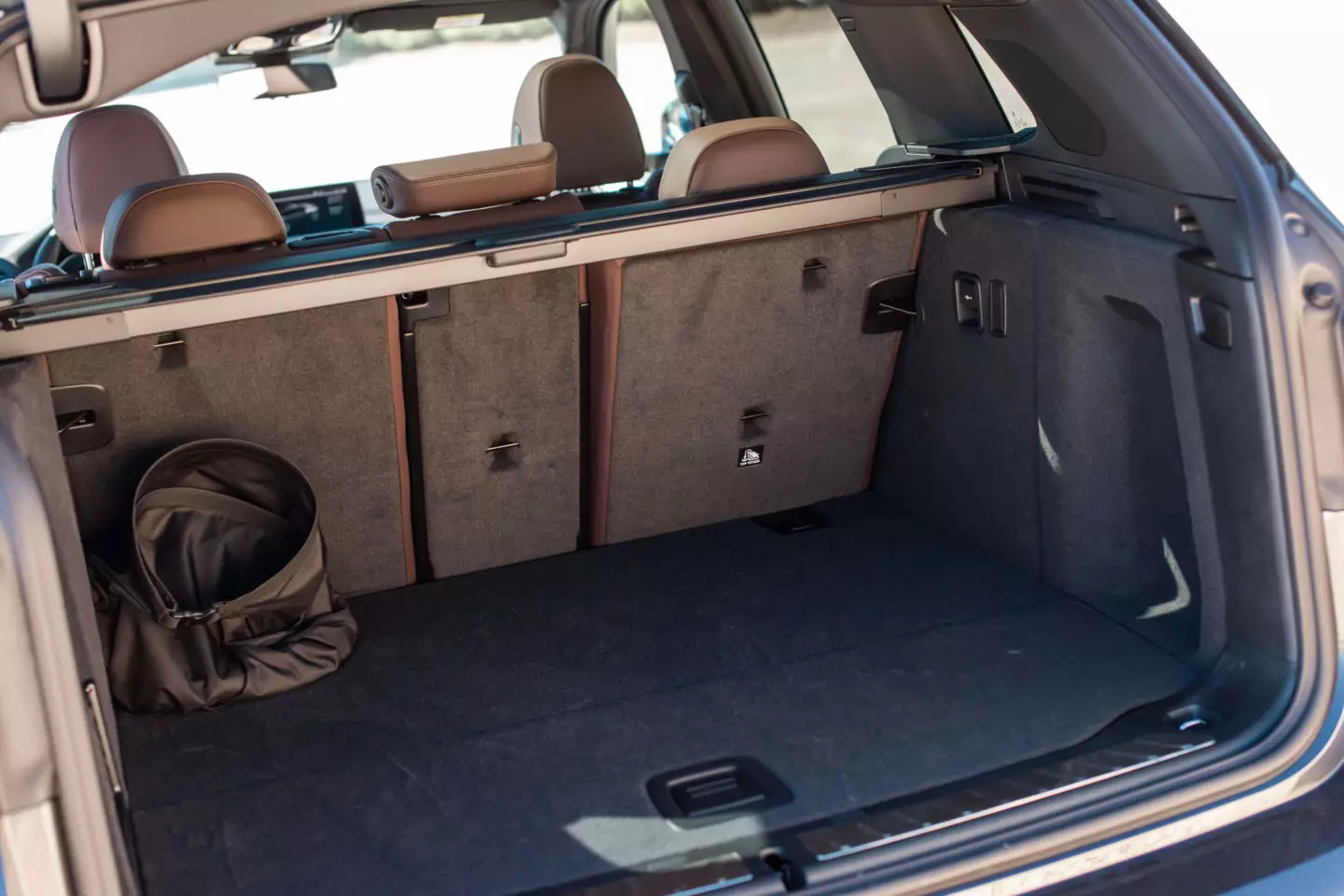
The trunk offers a very interesting 510 liters of capacity.
With three driving modes — Eco Pro, Comfort and Sport — as you'd expect, it's in Eco that the iX3 helps make “range anxiety” practically a myth. The announced autonomy amounts to 460 km (a value more than enough for urban and suburban use to which many SUVs are subject) and over the time I spent with the iX3 I got the feeling that, under the right circumstances, it can sin for being something… conservative!
Seriously, I covered more than 300 km with the iX3 on the most diverse routes (city, national road and highway) and when I returned it, the on-board computer promised a range of 180 km and consumption was fixed at an impressive 14.2 kWh/ 100 km (!) — well below the official 17.5-17.8 kWh combined cycle.
Of course, in Sport mode (which in addition to improving throttle response and changing steering weight gives special emphasis to the digitized sounds created by Hans Zimmer) these values are less impressive, however, in normal driving it is pleasant to see that the BMW iX3 does not obliges us to make great concessions in its use.
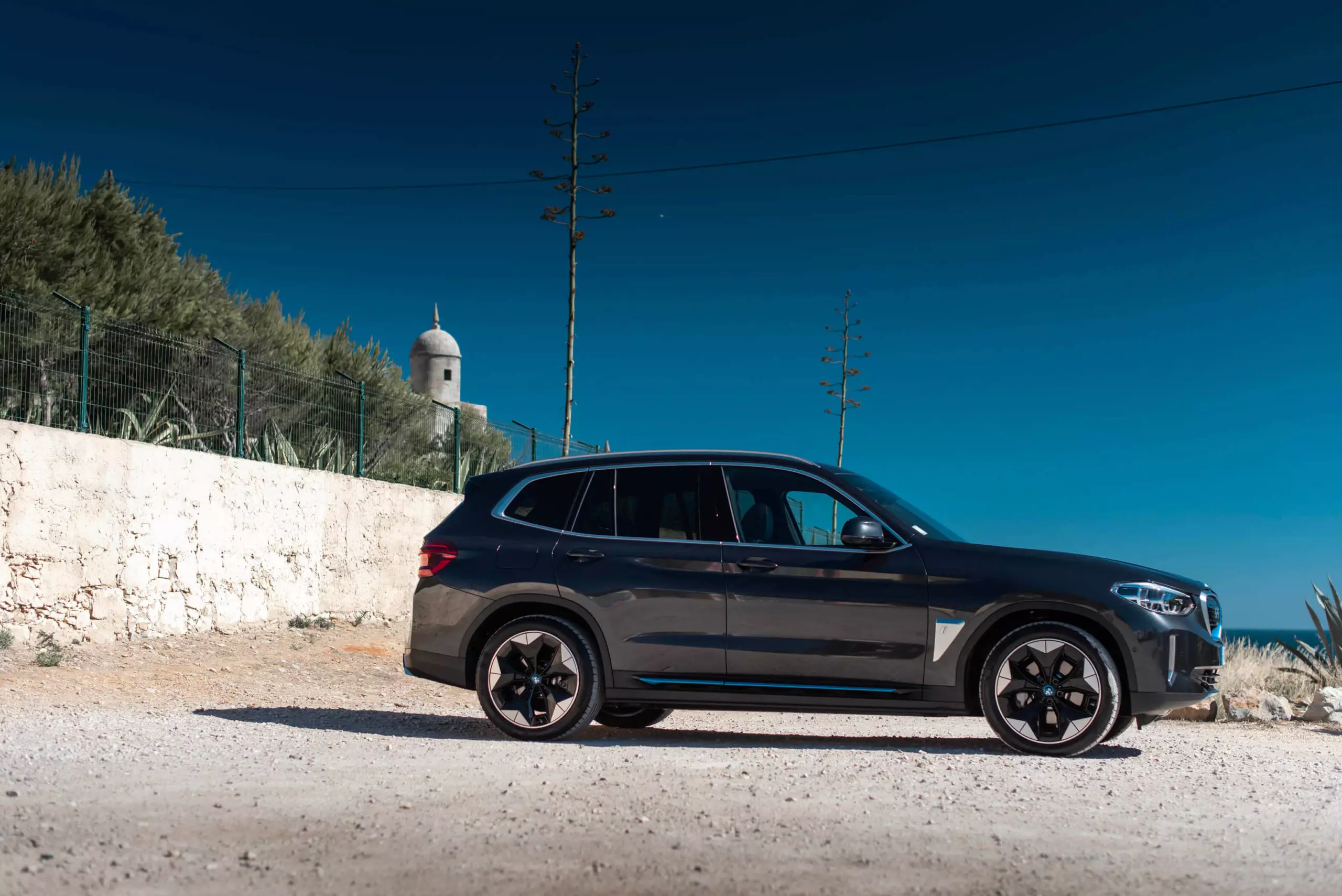
When it is necessary to charge it, it can be up to 150 kW of charging power in direct current (DC) charging stations, the same power accepted by the Ford Mustang Mach-e and higher than that supported by the Jaguar I-PACE ( 100 kW). In this case, we go from 0 to 80% load in just 30 minutes and 10 minutes are enough to add 100 km of autonomy.
Finally, in an alternating current (AC) socket, it takes 7.5 hours to fully charge the battery in a Wallbox (three-phase, 11 kW) or more than 10 hours (single-phase, 7.4 kW). The (very) charging cables can be stored under the luggage compartment floor.
Find your next car:
Is it the right car for you?
In an era in which most electric cars are beginning to “have the right” to dedicated platforms, the BMW iX3 follows a different path, but no less valid. Compared to the X3 it gains a more distinguished look and an economy of use that is difficult to match.
The typical BMW quality is still present, the competent dynamic behavior as well and, although it was not originally thought of as an electric, the truth is that in everyday life such is easily forgotten such is the efficiency of battery management. Thanks to it, we can use the iX3 as a daily car and all without having to give up on longer journeys on the highway.
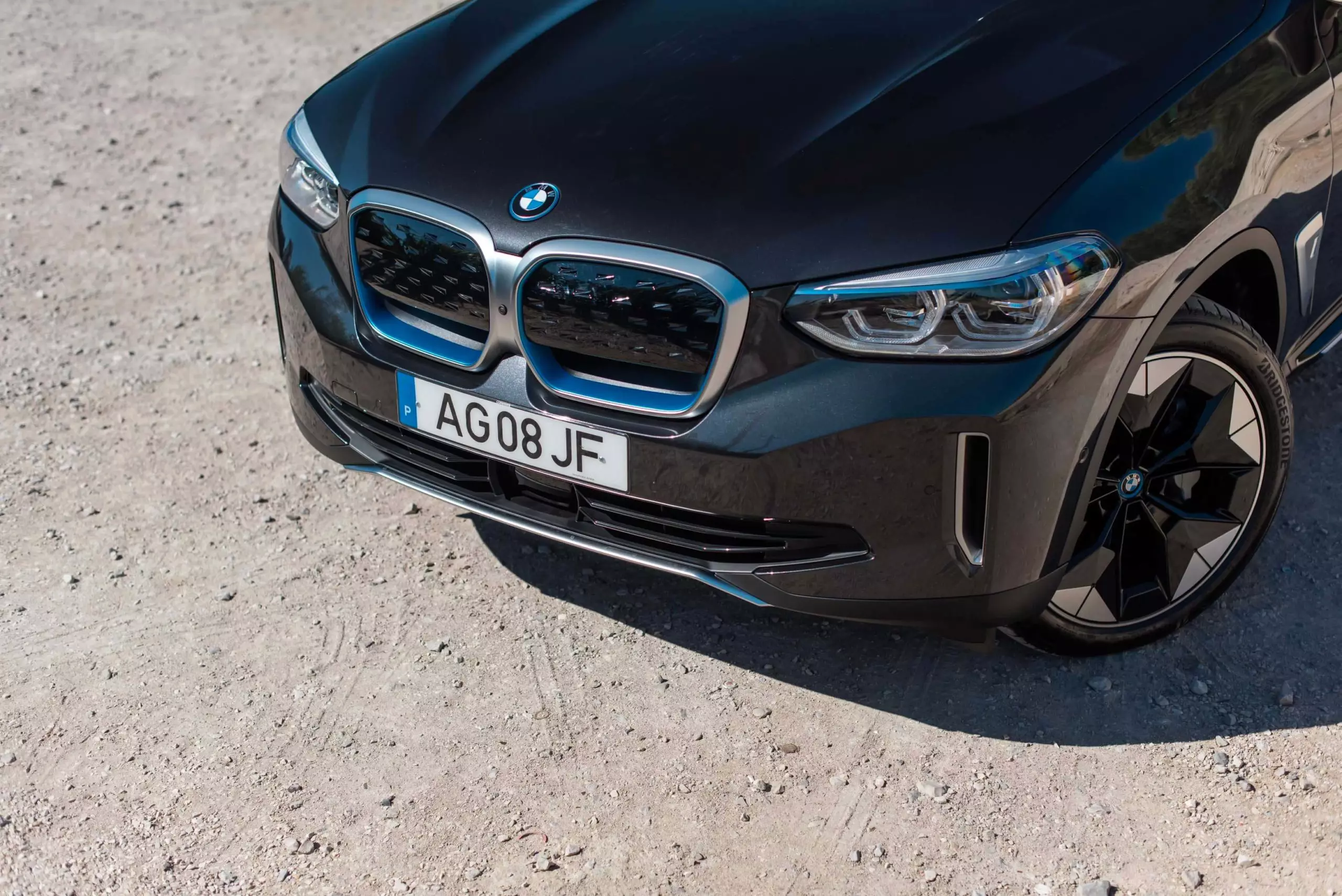
All that said, and answering the question I posed, yes, BMW did well to fully electrify the X3. In doing so, he ended up creating perhaps the version of the X3 best suited to the use that many of its owners give it (despite their dimensions, they are not a rare sight in our cities and suburban streets).
All of this was achieved without forcing us to "think" too much about "anxiety for autonomy" and only the high price asked by BMW for its first electric SUV can diminish its ambitions compared to its "range brothers".
